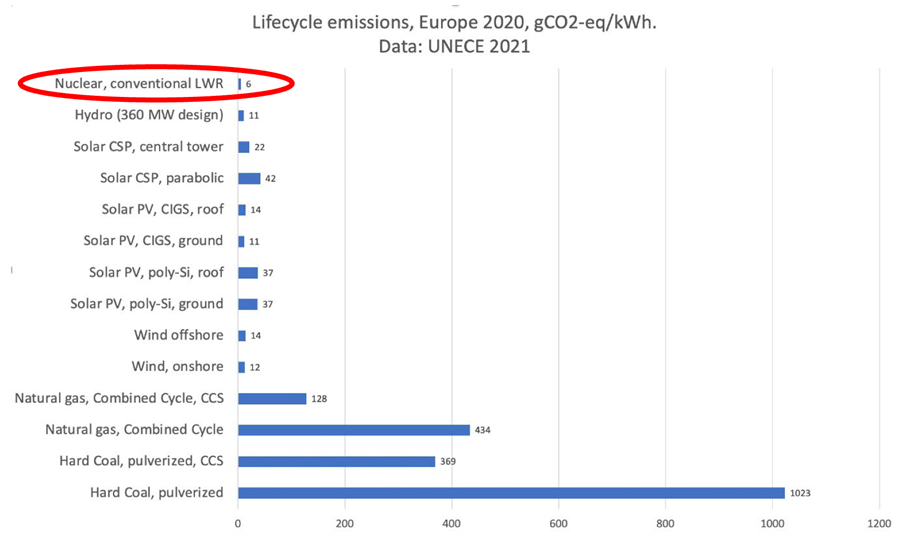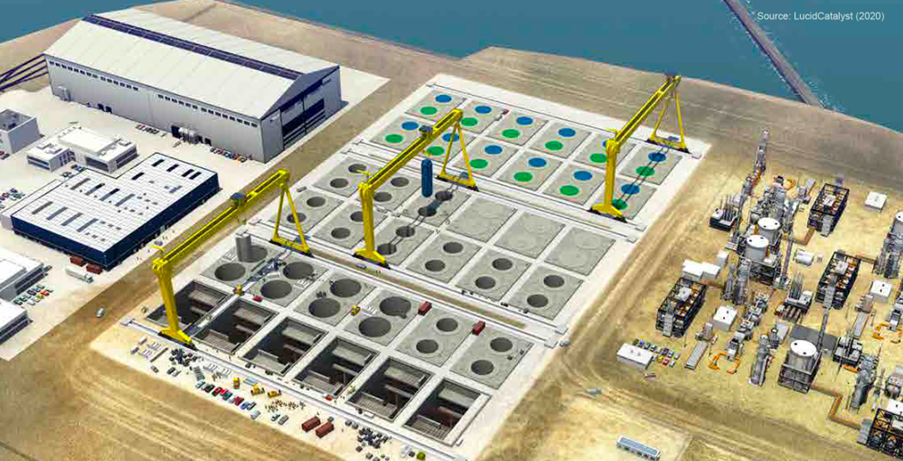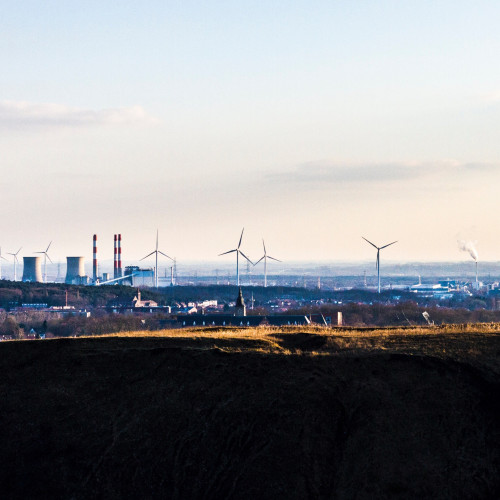Co-written by Kirsty Gogan, Founder and Managing Partner, TerraPraxis and Rauli Partanen, Chief Executive Officer, Think Atom
In recent years, it has become more and more clear that nuclear is one of our most sustainable energy sources. It has the lowest life cycle emissions, just 6 gCO2/kWh for the European fleet, according to a recent study by UNECE. That is roughly half of the next best, including wind, some solar technologies and hydro power, which all come at 11-14 grams.

Materials footprint is also among the tiniest of all energy sources, given the exceptional energy density of Uranium and the fact that while nuclear power plants are big and take a lot of materials to build, they also produce a lot of energy and can be operated at least 60, if not 100 years. Same goes for land-area, where nuclear has anywhere between 50 to 1000 times smaller physical footprint compared to wind or solar, per megawatt hour produced and depending on assumptions.
Nuclear is beautiful, because all these properties it has – low carbon, low materials use, low footprint – lets us leave nature be free while still supplying civilization-scale amount of clean energy. But the latter of the promises has not happened. Instead of scaling to meet growing demand and replacing fossil fuels, many nuclear projects have been plagued with delays, cost-overruns, and a multitude of other difficulties.
It is extremely hard to go out there and buy a nuclear plant, let alone to get it delivered within a reasonable timeframe and at reasonable cost. What we have now, especially in the west, are one-off projects starting every decade or two, where we lose most of the benefits of learning, standardization, and experience, and get all the downsides of trying to build a megaproject for the first time, over and over again.
And that needs to change. Nuclear needs to be deployed at 10 or even 100 times faster than what has happened recently. Given that permitting, siting and constructing megaprojects is hard and time consuming even if one gets good at it, we might want to look for other ways to deploy nuclear as well.
In two recent studies by Lucid Catalyst, we did just that. Let’s start with shipyards. The world has some 280 shipyards, most with plenty of idle capacity available. Some of these shipyards could be used to build floating offshore-power plants at much lower cost and shorter delivery times compared to conventional on-land construction. There would be relatively little site-work needed, and even that could be done while the power plant was already under construction at the shipyard, saving time and money.
The scale at which these shipyards already operate is enormous. Instead of building 5 or 10 gigawatts of new capacity each year as we have done – perhaps just enough to replace retiring plants and then some – we could build dozens of gigawatts of new capacity just from a single large shipyard – or a few gigawatts from a medium sized one. Globally, we could add hundreds of gigawatts of new capacity each year, while the cost would be significantly lower than the recent western projects.
Or we could build a “Gigafactory”, pictured below. It would have a reactor factory sited right next to a synthetic fuels plant, replacing current oil and gas refineries. The reactor factory would manufacture for example 600 MWt small, standardized high-temperature reactors, of which the first 36 units would be used as the energy source for the hydrogen and e-fuels manufacturing plant located next to the factory. After that, the factory output could be exported to another site.

We already know that nuclear is beautiful and sustainable. Now the nuclear industry, regulators, and society in general needs to prepare to deploy nuclear at a scale not seen before.
This article is part of the NNWI Forum 2022 series.








